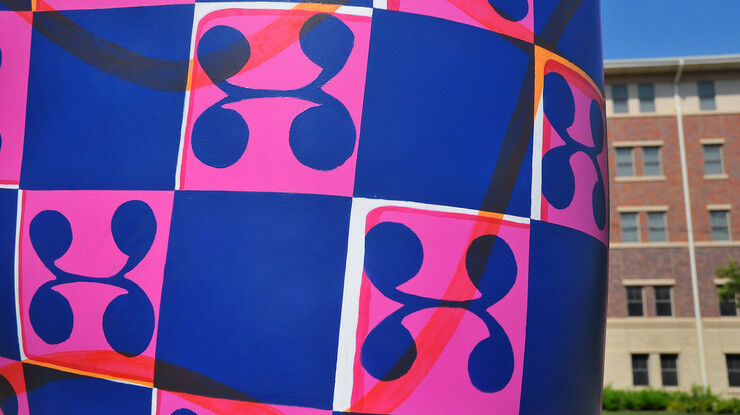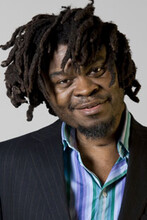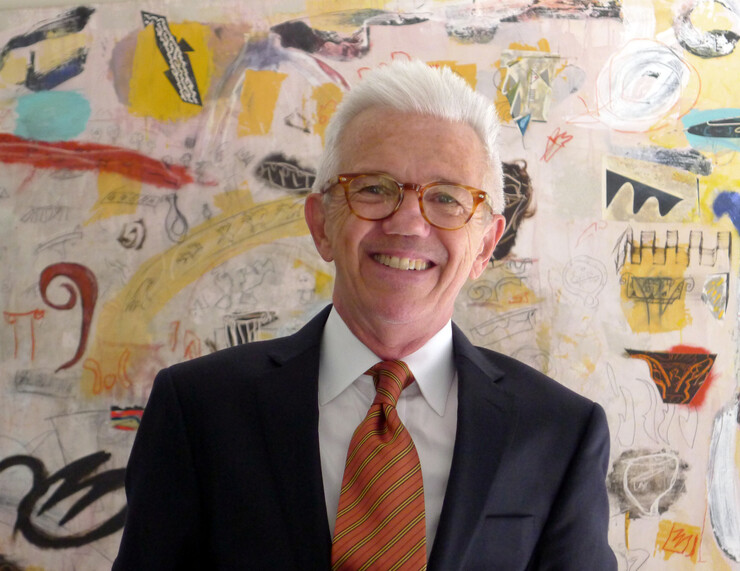· 2 min read
Sheldon adds Shonibare sculpture to collection

A billowing sculpture by British-born and Nigerian-raised artist Yinka Shonibare is now showing on UNL’s City Campus.
Now part of the Sheldon Museum of Art collection, “Wind Sculpture III” is a 20-foot-tall, fiberglass sculpture that looks like a brightly-colored bolt of fabric unfurling in the wind. Shonibare designed the piece to reference sails of ships that transported Dutch wax fabrics. The sculpture was put into place at 19th Street and North Antelope Valley Parkway during the week of July 20.
“ ‘Wind Sculpture III’ is an important addition to the Sheldon collection and UNL,” said Wally Mason, director of the Sheldon. “The location of the work, at the nexus of the city and UNL, is an ideal place for inquiry and dialogue. The billowing, colorful bolt of fabric — which is as kinetic as it is exotic — poses important questions about race, class and globalization.”
Shonibare has spent much of his life in England and Nigeria, two countries with an extensive and complex relationship. Born in England, Shonibare grew up in Lagos, Nigeria, in the wake of the end of British colonial rule. Influenced by personal experiences in a newly liberated nation and its former colonial ruler, Shonibare describes himself as a “postcolonial hybrid.”
He is best known for installations of mannequins dressed in clothing made with Dutch wax fabrics — or African batik. Although the colorful fabrics with vibrant patterns have become a sign of cultural pride and identity for Africans, they are a colonial invention, having been mass-produced in Southeast Asia and exported by the Netherlands since the mid-19th century.
Shonibare uses the iconic Dutch wax fabric designs in his artwork to show how signs of national or ethnic identity can be culturally constructed.
Through his art, Shonibare explores issues of race, class, colonialism and post-colonialism with the contemporary context of globalization. Mingling references to Western art, history and literature, his work asks what constitutes the collective contemporary identity today.
“Wind Sculpture III” is part of a Shonibare’s “Wind Series.” It was previously on display at the Museum of Contemporary Art in Chicago.










